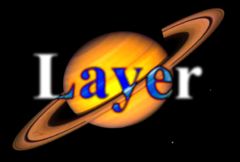S_Layer
Layers the Foreground image over the Background using one of a variety of blending operations. The colors of each input can also be adjusted using the lights, darks, and saturation parameters.In the Sapphire Composite effects submenu.
Inputs:
-
Foreground: The current layer. The clip to use as foreground.
- Background: Defaults to None. The clip to use as background.
- Matte: Defaults to None. Specifies the opacities of the Foreground clip. If this input is not provided the Foreground alpha is used instead. These values are scaled by the Opacity parameter before being used.
- Background: Defaults to None. The clip to use as background.

|